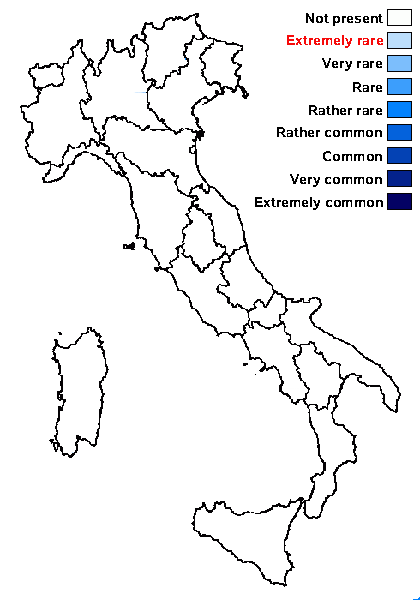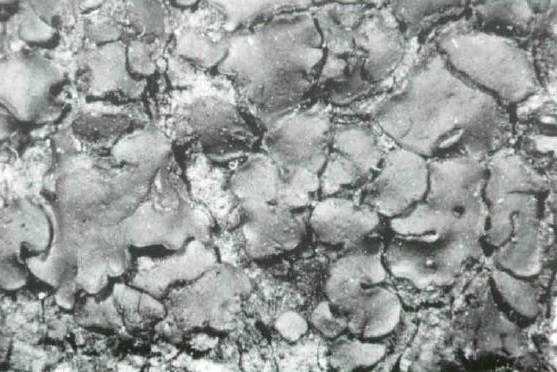Involucropyrenium romeanum (B. de Lesd.) Breuss
Herzogia, 29, 1: 197, 2016. Basionym: Verrucaria romeana B. de Lesd. - Bull. Soc. Bot. Fr., 58, 8: 662, 1912 (1911)
Synonyms: Involucropyrenium squamulosum (M. Brand & van den Boom) Breuss; Verrucaria squamulosa M. Brand & van den Boom
Distribution:
Description: Thallus small-squamulose, greenish grey to pale brown, matt, forming up to 4 cm wide patches. Squamules at first discrete, 0.1-0.3(-0.5) mm wide, c. 0.12 mm thick, rounded, flat to somewhat verrucose, slightly lobulate at margins, the older ones up to 1.3 mm wide and to 0.3 mm thick, densely aggregated and often overlapping, incised, with sometimes almost isidia-like, 0.1-0.25 mm wide subunits. Epinecral layer lacking or up to 5(-10) µm thick; cortex 5-20 µm thick, paraplectenchymatous, pale brown in upper part, with roundish to angular cells measuring 5-6 x 4-5 µm; medulla paraplectenchymatous, with subglobose, c. 5 µm wide cells which are less compact than in the cortex, the parts below the perithecia with up to 15 µm wide clusters of crystals. Hypothallus rarely well-developed to 0.3 mm thick, sometimes with 7-10 µm wide oil-cells; rhizohyphae rare, colourless, 2-4 µm thick. Perithecia black (often whitish to brown near the ostiole), subglobose, mostly immersed, numerous, usually arising among the squamules. Involucrellum black, well developed, 50-70 µm thick, reaching the base of the perithecia but open at base, contiguous with exciple or slightly spreading in lower part; exciple with a relatively short neck, 1.2- 2.6 µm thick, prosoplectenchymatous, pale brown below in older perithecia; periphyses simple to sometimes branched, strongly coherent, septate, 25-50 x 1-3 µm, interascal filaments absent. Asci 8-spored, clavate, with biseriately arranged spores, the wall I-. Ascospores 1-celled, hyaline, ellipsoid to ovoid, (23-)24-27(-28) x (8-)9-13(-15) µm. Pycnidia black, inconspicuous, c. 0.1 mm across. Conidia short-bacilliform with rounded ends, sometimes slightly curved, 3.8-4.4 x 0.9-1.1 µm. Photobiont chlorococcoid. Spot tests: cortex and medulla K-, C-, KC-, P-, UV-. Chemistry: without lichen substances.Note: on calcareous rocks, including man-made substrata; rather common in Western Europe, with a few records from the Alps outside Italy, but perhaps overlooked or misidentified elsewhere; to be looked for in Italy. According to Orange & al. (2023) preliminary moleculr data suggest that the species is most closely related to Verrucaria macrostoma.
Growth form: Squamulose
Substrata: rocks
Photobiont: green algae other than Trentepohlia
Reproductive strategy: mainly sexual

Predictive model
Growth form: Squamulose
Substrata: rocks
Photobiont: green algae other than Trentepohlia
Reproductive strategy: mainly sexual

Predictive model
 INDEX FUNGORUM
INDEX FUNGORUM
 GBIF
GBIF


